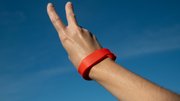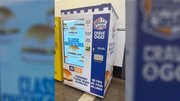Blog
How receipts can enhance the user experience
February 6, 2012 by Adam Ortlieb — Associate Director, Marketing, Seiko Instruments
Retailers can use the receipt as a platform to improve the user experience while generating incremental revenue.
In one application, consumers can recycle a cell phone or other device via a kiosk, and receive compensation for that device in the form of a coupon or in-store credit printed on the receipt. Customers appreciate the service this technology provides because they receive compensation that they would not normally get for turning in an old phone. By comparison, the last time I upgraded a phone, the provider encouraged me to donate my old phone to them (with no compensation). This process also generates incremental revenue for the store, helping accelerate the return on investment. And everyone benefits because it is an environmentally responsible process.
Other noteworthy customer applications include offering a store coupon on a receipt for a car wash, purchased via a self-service system. Still others offer warranty or loyalty program information as part of a standard receipt or on an accompanying document. These are all effective examples of information that can enhance the user's perception of the transaction, while increasing the ROI for the deployer.
From a peripheral manufacturer's standpoint, there are important design guidelines to facilitate a better user experience. Fundamentally, this means ensuring exceptional reliability. We've all had the experience of waiting in line, only to get held up by a paper jam or a down system. When these hiccups occur, the immediate impact is a longer wait time and potentially added service costs and lost revenue. To avoid these issues, solution providers and retailers should proactively look for peripherals with proven, long-term reliability.
Printing performance is another factor that impacts the user experience. For example, a printer that can operate at 10 inches per second or faster makes it possible to rapidly produce a much longer output, including valuable offers, without adding unnecessary wait time to the transaction. By rapidly receiving this useful information, the customer perceives a more positive experience.
Mobile transactions, as part of a line-busting application, are another innovative way to optimize the purchase process by reducing wait times and speeding transactions. Store and hospitality employees can use a lightweight, small form-factor mobile printer to rapidly execute a transaction and deliver a receipt on the spot, without the need to wait in line.










